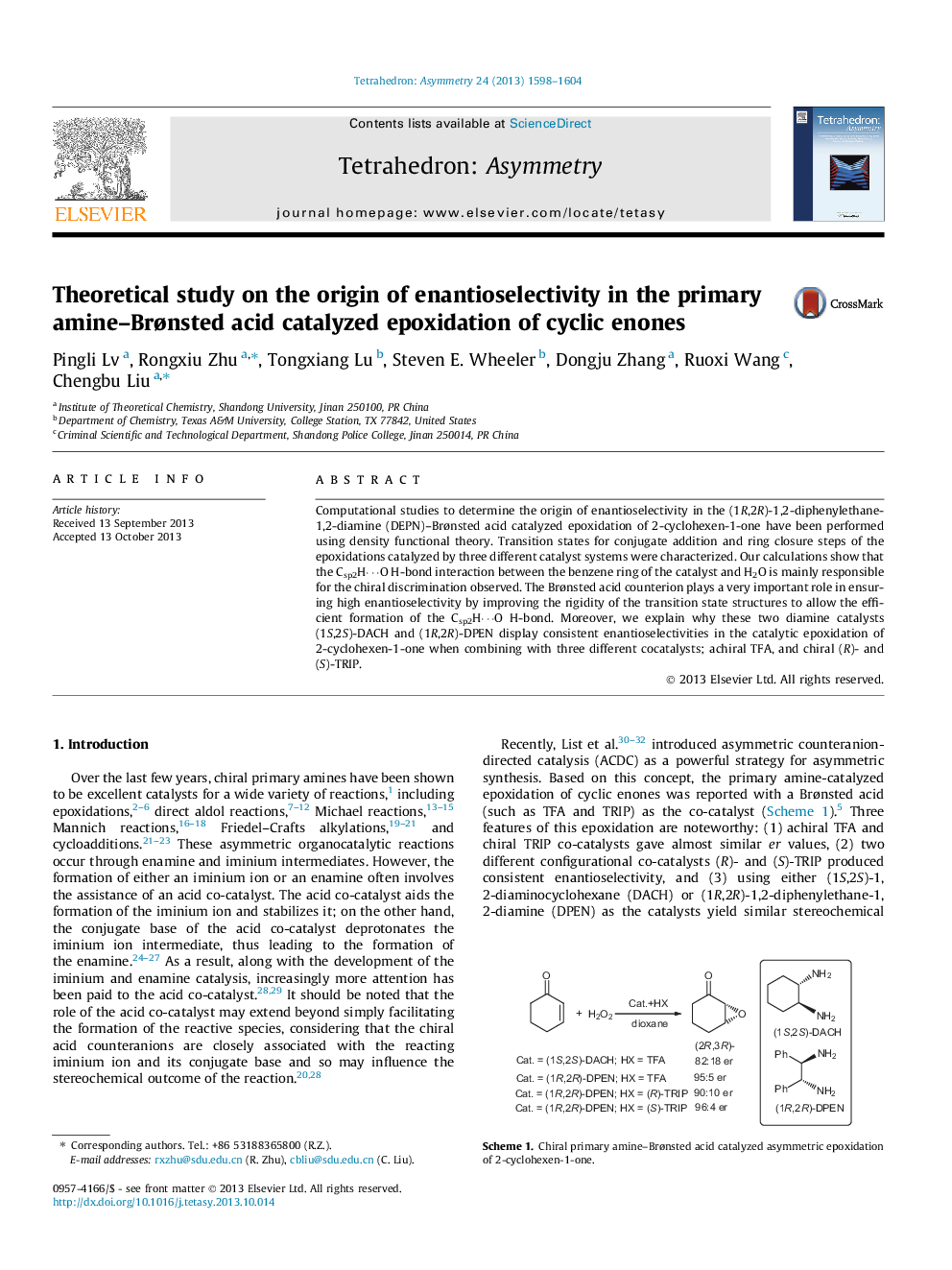| Article ID | Journal | Published Year | Pages | File Type |
|---|---|---|---|---|
| 1347497 | Tetrahedron: Asymmetry | 2013 | 7 Pages |
Computational studies to determine the origin of enantioselectivity in the (1R,2R)-1,2-diphenylethane-1,2-diamine (DEPN)–Brønsted acid catalyzed epoxidation of 2-cyclohexen-1-one have been performed using density functional theory. Transition states for conjugate addition and ring closure steps of the epoxidations catalyzed by three different catalyst systems were characterized. Our calculations show that the Csp2H⋯O H-bond interaction between the benzene ring of the catalyst and H2O is mainly responsible for the chiral discrimination observed. The Brønsted acid counterion plays a very important role in ensuring high enantioselectivity by improving the rigidity of the transition state structures to allow the efficient formation of the Csp2H⋯O H-bond. Moreover, we explain why these two diamine catalysts (1S,2S)-DACH and (1R,2R)-DPEN display consistent enantioselectivities in the catalytic epoxidation of 2-cyclohexen-1-one when combining with three different cocatalysts; achiral TFA, and chiral (R)- and (S)-TRIP.
Graphical abstractFigure optionsDownload full-size imageDownload as PowerPoint slide
